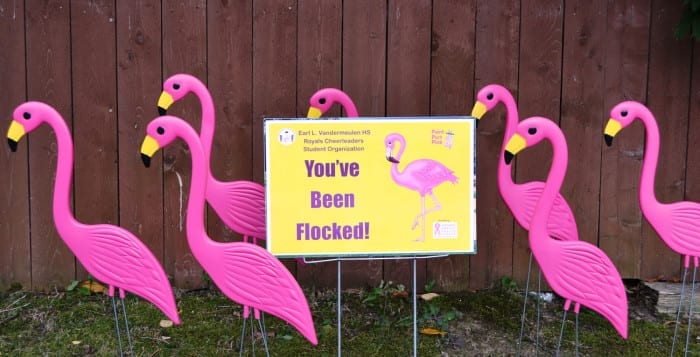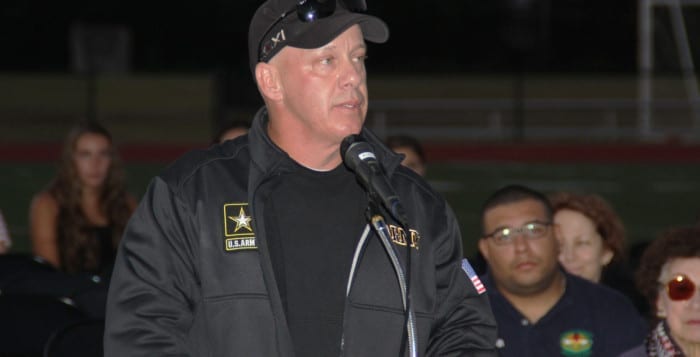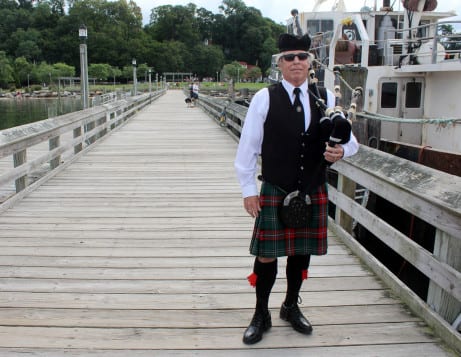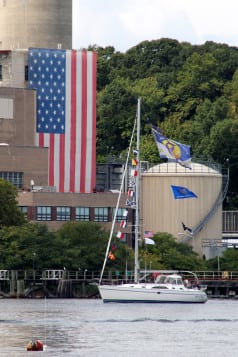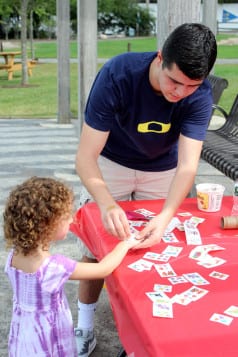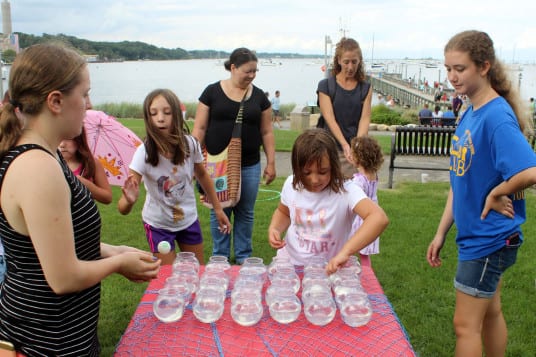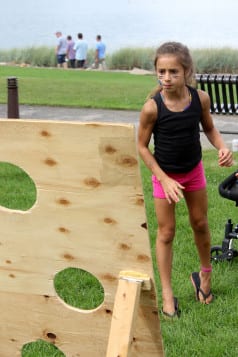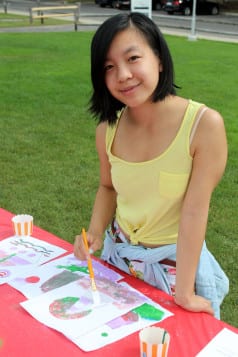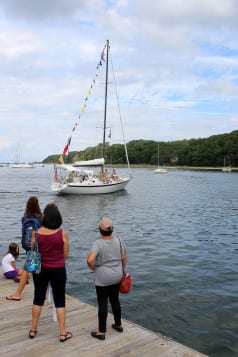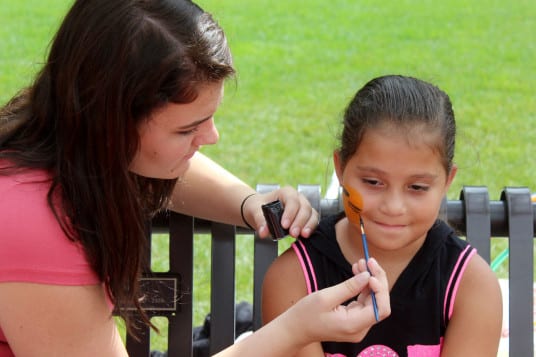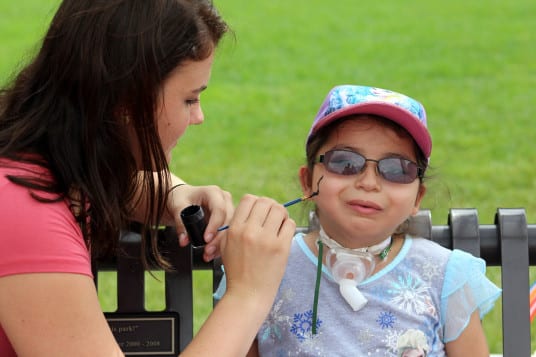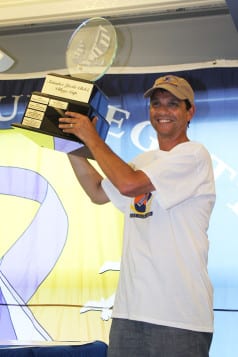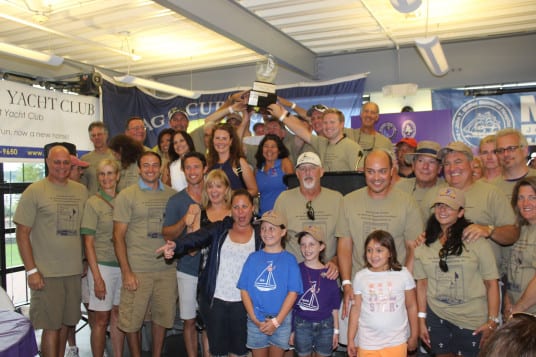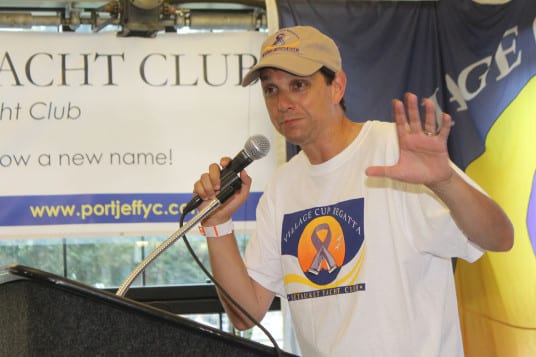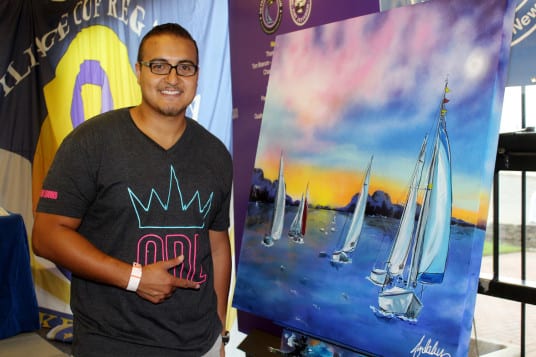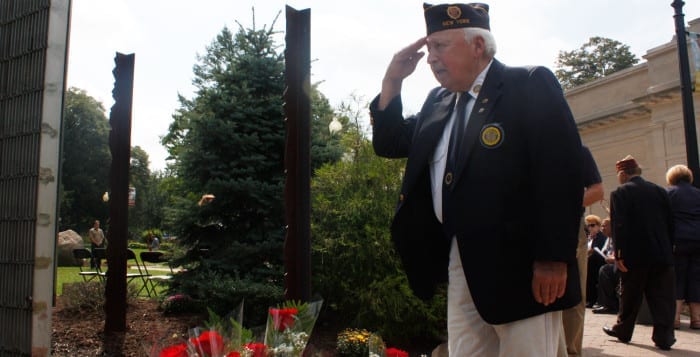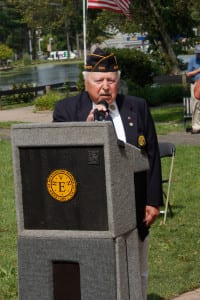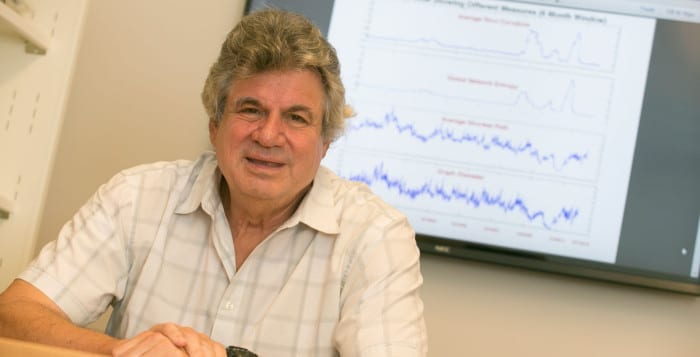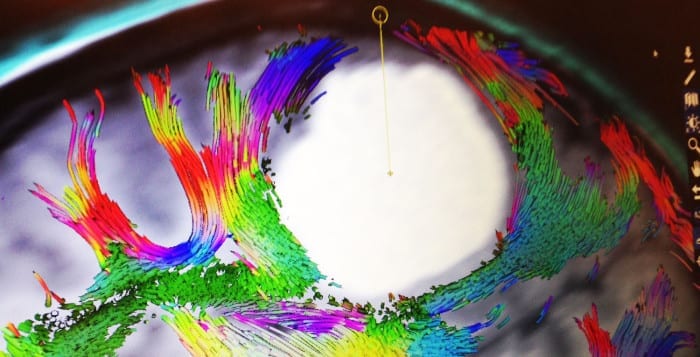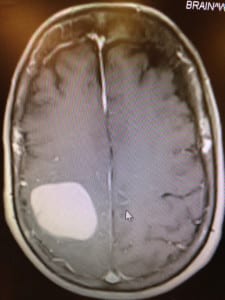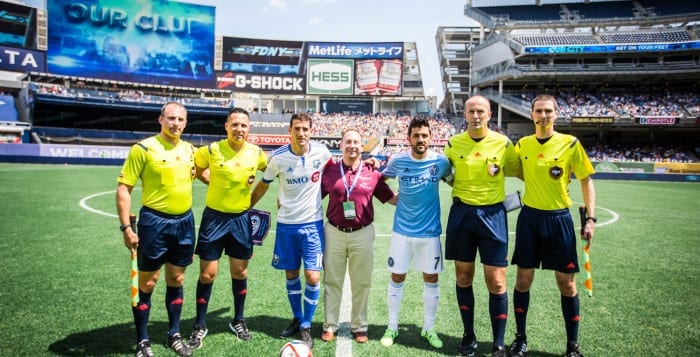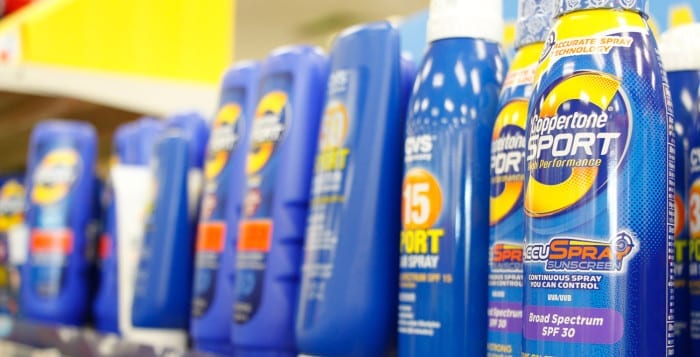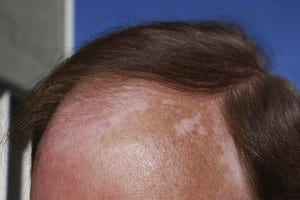The Village of Port Jefferson will be awash in pink all through October as part of John T. Mather Memorial Hospital’s breast cancer awareness and outreach called “Paint Port Pink.”
The event’s mission is to stress the importance of screening, early detection and education about breast cancer and to help raise funds for the Fortunato Breast Health Center Fund for the Uninsured at Mather. “Paint Port Pink allows Mather Hospital to build on our breast cancer outreach efforts by involving the entire community in a month-long campaign that is highly visible and offers important breast health information,” said Mather board member Judith Fortunato. Participating partners will distribute breast cancer education cards containing information on breast self-exams.
Paint Port Pink is presented by Astoria Bank with the support of North Shore Hematology Oncology Associates, Long Island Physician Associates, LI Anesthesia Physicians, the Greater Port Jefferson Chamber of Commerce, People’s United Bank, Suffolk Plastic Surgeons, The Richard and Mary Morrison Foundation, A World of Pink, Empire National Bank, Gordon L. Seaman and Harborview Medical Services.
Many activities will be held throughout the month to bring the community together. To kick off the event, a Tree Lighting Ceremony will be held at Village Hall tonight (Oct. 1) at 6:30 p.m. Mayor Margot Garant and Mather board member Judith Fortunato will flip the switch to light up the Village Hall tree in pink lights. All are invited. Local schools will provide music, and a flock of pink flamingos will make an appearance.
At the same time, merchants will be displaying pink lights in their windows. The water in the downtown fountains will be “pinked” with environmentally safe dye. Village Hall, the Village Center, the Port Jefferson Ferry Terminal and Mather Hospital will be illuminated by pink spotlights. Theatre Three’s marquee will blink with pink lights. In addition, pink banners will adorn the light poles and some restaurants will offer special pink drinks.
Through Oct. 31, several events will raise funds to benefit the Fund for the Uninsured at the Fortunato Breast Health Center as well as breast cancer treatment services at Mather. Students at Edna Louise Spear Elementary School will launch their “Your Change Can Make a Change” promotion, collecting change using the Center’s giant hourglass while Port Jefferson Middle School students will sell and wear pink shoe laces and Frisbees.
Earl L. Vandermeulen High School cheerleaders and the Student Organization will begin their “Flamingo Flocking” fundraising campaign. The pink plastic suburban icons will be placed on the lawns of friends and supporters along with a note explaining that friends or family paid to have them “flocked” and explaining that if they make a donation, the flock will migrate to any yard they choose.
The 9th annual Pink Rock Golf Classic at the Port Jefferson Country Club will be held on Oct. 5. Registration is at 11 a.m. followed by a barbecue lunch at 11:30 am and a shot gun start at 1 p.m.
Mather Hospital’s 50th annual Gala, One Enchanted Evening, will be held on Oct. 23 at the Hyatt Regency Long Island, Hauppauge, from 7 to 11 p.m. The gala will include the presentation of the Community Service Award and Theodore Roosevelt Awards for service to the hospital and the community.
Finally, on Oct. 29, Cold Spring Harbor Laboratory Director of Research David L. Spector, Ph.D., will speak about his research on “Searching for New Ways to Halt the Progression of Breast Cancer” at a free educational seminar at Mather Hospital’s new Long Island Anesthesia Physicians Conference Center starting at 6:30 p.m. For more information or to register, call 631-686-7878.

Tales of survival and hope at North Shore Art Guild’s latest exhibit
Mather Hospital has also teamed up with the North Shore Art Guild, the Village of Port Jefferson and the Port Jefferson Conservancy to present Artists United Against Breast Cancer, a juried art show currently on view at the Port Jefferson Village Center through Oct. 31. Featuring the works of more than 70 artists, the exhibit is inspired by the personal transformation, hope, love, fear, loss and victory associated with breast cancer. Choice of mediums included oil, acrylic, digital art, digital photographs and soft sculpture.
The show’s theme is “Victors of Survival, A Celebration of the Warrior Within Each of Us.” “Victors of Survival is not just about breast cancer. It’s about personal transformation, the person you become having faced the experience,” said Mac Titmus, vice president of the Art Guild and coordinator of the show. “It’s about the emergence of the warrior within, and the struggle that brings it forth. It’s about … how [the artists] choose to transform that passion into expression.”
Many of the artists in the show have been afflicted with breast cancer or have close family members who have.
One painting in the show stands out among the crowd. A woman stands atop a mountain, her arms raised in triumph. The woman is also the artist, Marge Governale of E. Setauket, and she is celebrating not only reaching the mountain’s summit, but surviving breast cancer. “It’s a painting of me right after I finished my treatment in October 2013, when I went with my daughter on a trip to Ojai, California,” said Governale.
In the painting, Governale’s hair is short, just growing back after chemotherapy. “I had not been exercising. My daughter said ‘let’s hike,’ and I made it the top of that mountain,” she said. It felt so good that I was able to get back to some of the things I loved after my treatment. That was a victory for me.”
“I only started painting because I had breast cancer,” she said. “Good things sometimes come from bad things.”
The winners were announced on Sept. 1. The judges included Judith Fortunato, Holly Gordon, Ward Hooper and Lori Horowitz.
Best in Show went to Len Sciacchitano for “What Will He Think.” “I remember the terror in my cousin’s eyes when she first told me she had cancer and a breast had to be removed. I can only imagine how she felt when she was faced with that diagnosis, the moment she heard, “You have breast cancer,” said Sciacchitano. “I’m sure it is a moment that remained in her mind for the rest of her life. I do not know how it feels and tried to visually imagine her emotions when she realized she needed major surgery and a portion of what she had known was being taken away,” he said.
Joanna Gazzola garnered first place for “Defiant Yet Vulnerable.” “I have had two friends and one relative who had cancer and who handled their illnesses with grit, determination and courage. One has survived for almost a decade so far and does walks to raise money for cancer research every year. The other two have passed, but provided so much inspiration to me,” said Gazzola. “I can only hope that I live and die with as much grace and thoughtfulness as they had,” said Gazzola.
Second place went to Zhen Guo for “Breasts are the Essence,” soft sculpture. Said Guo, “A woman’s breasts are symbolic of her multifaceted nature in many ways. They are the source of nourishment for infants, of warmth and security for her children, of sexuality and attractiveness for her mate. When they are injured, her whole being and all the people who know her are injured, too.”
Evelyn Adams, whose painting, “Unite & Fight For A Cure” won third place, said, “My mother passed away of breast cancer in 2008 at the age of 60. I became so mad with the disease. However, as time passed by, I began to accept the reality of the disease and now I really do support the fight for breast cancer. Showing my support, I expressed my view for a cure in a special way. I cast my hand and then incorporated clay made breast, and also placed over 100 pieces of pink ribbons around a pedestal in which represent all families who are coming together and bringing awareness to breast cancer.” She went on, “Therefore, my main idea of this piece is to encourage viewers, families who had a family member died of breast cancer and those who are fighting breast cancer of hope for a cure.”
Honorable mentions went to Bernadette De Nyse for “Mortality Realized,” Joanna Gazzola for “Conflict, Denial and Understanding,” Neil Leinwohl for “New Blooms,” Lynellen Nielsen for “Grace,” Susan Silkowitz for “Abuela” and Angela Stratton for “The Protector.”
The Port Jefferson Village Center is located at 101A. E. Broadway. An artist reception will be held on Saturday, Oct. 3, from 4 to 7 p.m. on the second level with raffles, blind auctions and art sales. All of the artists have agreed to donate 25 percent of any sales to support breast health care at the Fortunato Breast Health Center of Mather Hospital. For further information about the art show, call 631-802-2160.

